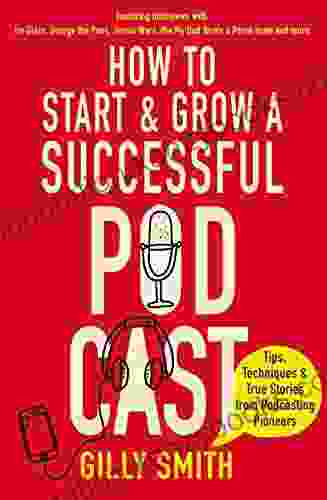Osteoporosis Research Animal Models: A Comprehensive Guide to Understanding Bone Disease

Osteoporosis, a silent but debilitating bone disease, has become a major concern worldwide. Characterized by reduced bone density and increased susceptibility to fractures, this condition affects millions of individuals, particularly the elderly. Understanding the complex mechanisms underlying osteoporosis is crucial for developing effective treatments and prevention strategies.
Animal models play a pivotal role in osteoporosis research. They provide a controlled environment to study the disease's progression, test potential therapies, and gain insights into its underlying causes. Various animal species have been used for osteoporosis modeling, each offering unique advantages and limitations.
Rodents, particularly mice and rats, are widely used in osteoporosis research due to their short lifespans, ease of breeding, and availability of genetically modified strains. Researchers can manipulate genes to study the effects of specific genetic factors on bone metabolism and induce osteoporosis through ovariectomy or hormonal treatment.
5 out of 5
| Language | : | English |
| File size | : | 1177 KB |
| Text-to-Speech | : | Enabled |
| Screen Reader | : | Supported |
| Enhanced typesetting | : | Enabled |
| Word Wise | : | Enabled |
| Print length | : | 702 pages |
| Lending | : | Enabled |
Non-human primates, such as monkeys and apes, share a closer genetic relationship to humans than rodents. As a result, they exhibit similar bone structures and metabolic pathways. Studies using non-human primate models provide valuable insights into the human disease process and allow for testing of experimental therapies that may not be feasible in humans.
Large animal models, including sheep, pigs, and dogs, have larger skeletons and longer lifespans, which enables the study of osteoporosis over an extended period. Additionally, their bones share structural similarities with humans, allowing for direct comparisons between experimental results and clinical observations.
The choice of animal model for osteoporosis research depends on the specific research question, available resources, and the characteristics of the model itself. Factors to consider include:
- Species-specific characteristics: Different animal species exhibit varying bone structures, metabolic rates, and responses to experimental interventions.
- Genetic background: Genetically modified animals can provide specific insights into the role of genetic factors in osteoporosis.
- Experimental design: The type of osteoporosis being modeled, the duration of the study, and the outcome measures required will influence the choice of animal model.
The use of animal models in osteoporosis research has a rich history dating back to the early 20th century. Pioneering studies by Fuller Albright and Edith Gould on rats provided the first experimental evidence of osteoporosis. In the 1970s, the discovery of ovariectomy-induced osteoporosis in rodents led to a surge in research using this model to mimic postmenopausal bone loss. Subsequent advancements in molecular biology and genetic engineering have further refined our understanding of osteoporosis and its underlying mechanisms.
Animal models continue to be indispensable in various aspects of osteoporosis research:
- Disease mechanisms: Animal models allow researchers to study the cellular and molecular processes involved in bone formation and resorption, leading to a better understanding of osteoporosis development.
- Drug development: Animal models are used to evaluate the efficacy of potential osteoporosis treatments and assess their safety and side effects.
- Prevention strategies: Researchers employ animal models to investigate the benefits of exercise, nutrition, and lifestyle interventions in preventing osteoporosis.
Osteoporosis research animal models provide invaluable tools for understanding the complex mechanisms of bone disease, developing effective treatments, and exploring preventive strategies. By bridging the gap between animal studies and human health, researchers aim to unlock the secrets of osteoporosis and improve the lives of countless individuals worldwide.
Gustavo Duque is a renowned expert in osteoporosis research and the author of the authoritative book, 'Osteoporosis Research Animal Models.' With extensive experience in animal modeling and bone biology, Professor Duque's groundbreaking work has advanced our understanding of this debilitating condition. His contributions have paved the way for novel therapeutic approaches and improved outcomes for osteoporosis patients.
- Duque, G. (2023). Osteoporosis Research Animal Models. Springer Nature.
- Manolagas, S. C. (2000). Birth and death of bone cells: Basic regulatory mechanisms and implications for the pathogenesis and treatment of osteoporosis. Endocrine Reviews, 21(1),115-137.
- Compston, J. E. (2002). Animal models of osteoporosis: utility, limitations, and future directions. Osteoporosis International, 13(1),80-93.
5 out of 5
| Language | : | English |
| File size | : | 1177 KB |
| Text-to-Speech | : | Enabled |
| Screen Reader | : | Supported |
| Enhanced typesetting | : | Enabled |
| Word Wise | : | Enabled |
| Print length | : | 702 pages |
| Lending | : | Enabled |
Do you want to contribute by writing guest posts on this blog?
Please contact us and send us a resume of previous articles that you have written.
 Book
Book Novel
Novel Page
Page Chapter
Chapter Text
Text Story
Story Genre
Genre Reader
Reader Library
Library Paperback
Paperback E-book
E-book Magazine
Magazine Newspaper
Newspaper Paragraph
Paragraph Sentence
Sentence Bookmark
Bookmark Shelf
Shelf Glossary
Glossary Bibliography
Bibliography Foreword
Foreword Preface
Preface Synopsis
Synopsis Annotation
Annotation Footnote
Footnote Manuscript
Manuscript Scroll
Scroll Codex
Codex Tome
Tome Bestseller
Bestseller Classics
Classics Library card
Library card Narrative
Narrative Biography
Biography Autobiography
Autobiography Memoir
Memoir Reference
Reference Encyclopedia
Encyclopedia River Jordan
River Jordan T D Jakes
T D Jakes Sue Hitzmann
Sue Hitzmann Simon D May
Simon D May Jared C Wilson
Jared C Wilson Gordan Beckham
Gordan Beckham Qiana Tucker
Qiana Tucker Gina Cascone
Gina Cascone Johan Yu
Johan Yu Thomas Figlioli
Thomas Figlioli Tara Knudson
Tara Knudson James L Casale
James L Casale George Sullivan
George Sullivan Joss Burnel
Joss Burnel Silvia Hill
Silvia Hill Michael Hamilton
Michael Hamilton Nicholas Stiles
Nicholas Stiles Roy Taylor
Roy Taylor Zoe Mendelson
Zoe Mendelson Gerry Duffy
Gerry Duffy
Light bulbAdvertise smarter! Our strategic ad space ensures maximum exposure. Reserve your spot today!

 Terence NelsonNourish Yourself and Your Little Wonder: A Comprehensive Guide to Pregnancy...
Terence NelsonNourish Yourself and Your Little Wonder: A Comprehensive Guide to Pregnancy...
 Cruz SimmonsThe Complete Cookbook for Mastering the Air Fryer: Your Culinary Companion...
Cruz SimmonsThe Complete Cookbook for Mastering the Air Fryer: Your Culinary Companion...
 Forrest BlairUnlock the Secrets of Podcasting Pioneers: Tips, Techniques, and True Stories
Forrest BlairUnlock the Secrets of Podcasting Pioneers: Tips, Techniques, and True Stories Truman CapoteFollow ·7.6k
Truman CapoteFollow ·7.6k Clark BellFollow ·7.5k
Clark BellFollow ·7.5k Jerome PowellFollow ·2.9k
Jerome PowellFollow ·2.9k Matthew WardFollow ·6.3k
Matthew WardFollow ·6.3k Gerald BellFollow ·5.3k
Gerald BellFollow ·5.3k Elmer PowellFollow ·4.9k
Elmer PowellFollow ·4.9k Jules VerneFollow ·8.3k
Jules VerneFollow ·8.3k Chuck MitchellFollow ·12.2k
Chuck MitchellFollow ·12.2k

 Gary Reed
Gary ReedFix It & Forget It Slow Cooker Dump Dinners &...
Are you ready to...

 Corey Hayes
Corey HayesUnlock the Secrets of Addictive Behavior: Dive into the...
In the face of the prevalent global addiction...

 Harvey Bell
Harvey BellHistorical Atlas of Indonesia by Robert Cribb: A Journey...
Embark on an...

 Allen Ginsberg
Allen GinsbergUnveiling Cosmic Truths: A Message from the Confederation...
Confederation of Planets Prepare to...

 Ernest Hemingway
Ernest HemingwaySlow Cooker Recipes 10 Ingredients Or Less And Gluten...
In the hustle and bustle of...
5 out of 5
| Language | : | English |
| File size | : | 1177 KB |
| Text-to-Speech | : | Enabled |
| Screen Reader | : | Supported |
| Enhanced typesetting | : | Enabled |
| Word Wise | : | Enabled |
| Print length | : | 702 pages |
| Lending | : | Enabled |








